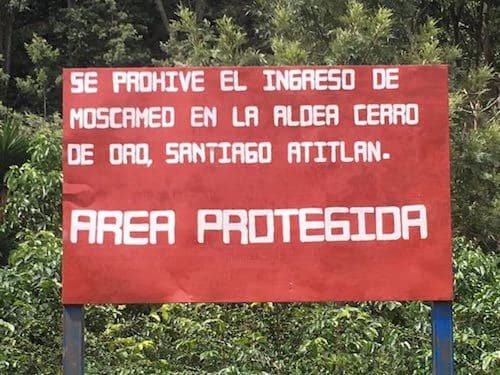A Few Choice Words for the Medfly?
At a time when the Zika virus is grabbing headlines, I haven’t thought much about mediterranean fruit fly. Recently, however, these signs popped up on the highway around Cerro de Oro–the closest village to us. The village has a few choice words for the medfly.
I’m well acquainted with the destruction medflies can do. In the early 1980s, California launched an all-out war on the crop-eating insects. The state sprayed Malathion, terrifying parents who feared the insecticide would be worse than the pest for the health of their children. In 1981, a group of us had to sneak a fruit salad past medfly inspection stations to a friend’s wedding, which was far outside the area effected by medflies. Years later, I had medfly traps placed in my San Diego yard.
We’re in rural Guatemala and agriculture is crucial here. All around us are coffee plantations, avocado groves, citrus, corn, beans, tomatoes, and a variety of other fruits and vegetables. A medfly infestation could be devastating here. I certainly understand wanting to keep them out.
What puzzled me was the message the signs in Cerro de Oro are trying to send. Are they written to the Spanish-reading medflies as a warning to stay away? Are they trying to tell us that our pet medflies should be left at home? Just how are signs going to keep the pests at bay?
The puzzle was solved by a friend who gave me some context. In California, medflies are now controlled by irradiating the males to sterilize them. This program has been used successfully in Guatemala as well, but I’m told that recent changes to the Moscamed program have them spraying pesticides instead. Cerro de Oro is using signs to attempt to keep the program out and prevent spraying within the village. I don’t know how well signs may work, but at least they make some sense to me now.
Share this post!

